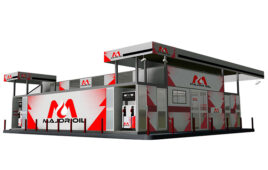 Even as customers expect gas prices to rise, more are optimistic about the economy.
Even as customers expect gas prices to rise, more are optimistic about the economy.
Customers expect that gas prices are going to continue their upward climb in June, according to a survey released by the National Association of Convenience Stores (NACS).
June is usually a period in which gas prices tend to moderate or even fall after the completion of the annual spring transition to summer-blend fuel. Yet nearly three in five consumers (59%) expect gas prices will go up over the next 30 days, versus just 9% who expect them to fall.
On average, consumers report that gas prices rose 16 cents last month to reach $2.75 per gallon. Despite these rising gas prices, consumer optimism about the overall economy is growing. A slight majority (52%) of consumers say they feel “very” or “somewhat optimistic” about the economy, up four percentage points from the 48% who said so in May. Consumers ages 18-34 are feeling particularly hopeful, with nearly three in five (57%) saying they feel optimistic about the economy, including 20% who say they are “very optimistic.”
Nationally, gas prices remain almost a dollar per gallon cheaper than they were this time last year, leaving many consumers with extra money in their pockets. The U.S. Energy Information Administration estimates that lower gas prices will save the average American family $675 in fuel costs over 2015.
Less than half (44%) of Americans say they are spending this extra money, with 38% spending it on day-to-day essentials and 6% spending it on special items they wouldn’t buy otherwise. Households making less than $35,000 per year are most likely to be spending the money on day-to-day essentials (47%, vs. just 28% of those making more than $75,000 per year). In contrast, higher-earning consumers in households making over $75,000 per year are more likely to be saving the money (39%, vs. 27% of lower-earning consumers).
Overall, one in three Americans (33%) are saving the extra money in their pocket from lower gas prices. Lower-earning savers are much more likely to putting these savings toward an emergency fund (64%, vs. just 31% of higher-earning savers). Meanwhile, higher-earning savers are much more likely to be saving the money toward retirement (36%, vs. just 8% of lower-earning savers).
One in five American consumers (21%) are using the extra money to pay down debt. Among those, 71% are using it to pay down existing credit card debt.
NACS, which represents the convenience store industry that sells 80% of the gas sold in the country, conducts the monthly consumer sentiment survey to gauge how gas prices affect broader economic trends. The NACS survey was conducted by Penn, Schoen and Berland Associates LLC; 1,105 gas consumers were surveyed June 3-8, 2015.




